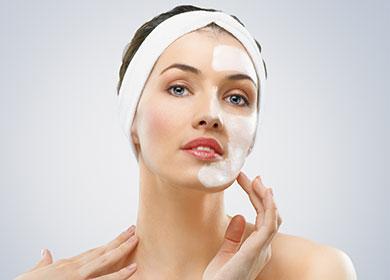The content of the article
Skin aging is a natural process taking place against the background of general wear and tear on the body. Modern cosmetology has expanded its age framework in comparison with concepts that existed twenty years ago. Today, recommendations for the prevention of skin aging are given to girls at the age of twenty. And often they are completely unfounded.
It is important to understand what aging really is and how it happens.
Why does skin age?
Skin is not just the shell of our body. This is a living vast organ, closely connected with other systems of the body. Multiple factors influence the condition of the skin, for example, the quality of the digestive system, the stability of the immune system, hormonal levels, and even single stress.
When the aging process starts in the body, and this happens after thirty years, the structure of the skin changes. In fact, aging is a decrease in the efficiency of tissue regeneration and the rate of reproduction of protein - the main building block of cells. The slower our body produces protein, the slower the cells regenerate. This happens in every “corner” of the human body, but the skin condition is noticeable externally. Therefore, the prevention of aging is most often understood as a special approach to facial care.
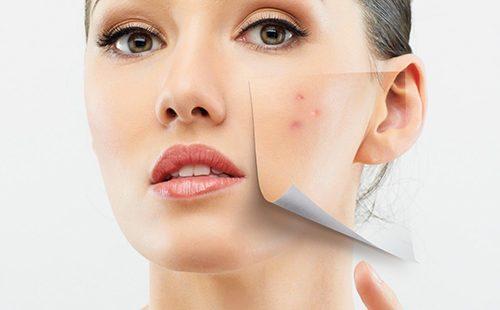
External exposure options
Scientists have long understood that in order to preserve the youthfulness of the skin, it is important to give it appropriate signals that prohibit “falling asleep”, increasing the rate of regeneration and reproduction of your own protein. The main protein of the skin is collagen.
To maintain the quality of its renewal at a sufficient level, it is necessary to maintain fibroblast cells in good shape. They, as a result of the proliferation process, stimulate the formation of new collagen fibers. But to control the operation of these cells, it is necessary to “reach out” to them. And this makes it difficult to make the epidermis - the outer barrier layer of the skin.
Despite the small external thickness, the epidermis is an extremely effective protective system. It consists of five layers of different cells and is covered with an external "carapace" - a multilayer keratinized epithelium. The purpose of the epidermis is to exclude contact of the dermis and subcutaneous fat with external factors. And this system copes with its work perfectly.
Only very small molecules can penetrate the epidermis. And ten years ago, science did not know substances capable of overcoming the protective shell of our body and delivering corresponding signals to fibroblasts. The only guaranteed way to reach these cells was through injection. By piercing the epidermis with a needle, the doctor introduces the necessary substance into the internal structure of the skin in order to activate its regenerative processes. So in cosmetology, the direction of injection rejuvenation arose.
Reasons for the popularity of injections
The direction developed rapidly and rapidly. Many of its options have appeared, allowing to introduce various substances into the skin structure. For example, biorevitalization based on hyaluronic acid in order to replenish it in the structure of the skin.The hyaluronan injection was widely popularized by the fact that it is it that is a signal substance for activating fibroblasts.
In addition to hyaluronic acid, various mixtures of substances are introduced under the skin of the steel. The direction of mesotherapy has been formed, which allows saturating the tissues with amino acids, vitamins. Botox and similar in action drugs appeared that cause paralysis of certain muscle groups, which leads to the elimination of their tone and correction of facial wrinkles.
Large corporations have invested heavily in injection rejuvenation techniques. Wide advertising campaigns were held that disseminated the ideas of returning youth to the skin through beauty injections. An important factor in their widespread distribution was the superprofitability of the technology: people confident in their effectiveness were ready to pay for guaranteed rejuvenation. But, unfortunately, injection methods do not always work.
The reason for the decrease in the production of hyaluronic acid can be diseases, autoimmune processes. But in the vast majority of middle-aged women, the amount of substance in the body is similar to what it was twenty years ago.
In cosmetology, hyaluronic acid is used as an active moisturizing component. But if the skin is dehydrated, which is manifested by its dryness, the formation of fine wrinkles, you must first solve two issues.
- Do you drink enough water?? For normal skin tone, you need to drink 1.5-2 liters of clean water daily.
- Is there any loss of moisture due to a violation of the barrier function of the skin? There are many reasons for the decrease in the efficiency of the epidermis, but this can happen both at sixteen and at fifty. To maintain the barrier function of the skin allows proper, regular care with the use of cosmetics.
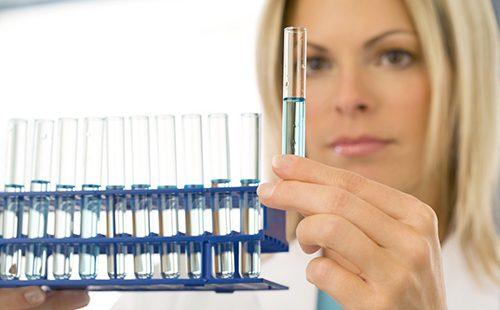
Cosmeceuticals for the prevention of aging
It is a mistake to consider injections the only way to preserve youthful skin. Today, there are drugs that can overcome the epidermal barrier and deliver to the deep layers of the skin the same substances or signals that deliver the compounds from the syringe.
Today, when cosmetics can work miracles, it is hard to imagine that only 50-60 years ago, in the middle of the 20th century, a fairly limited range of these products existed mainly for the needs of medicine. And for production, almost the only way to obtain cosmetics was used - the cold method of creating creams and ointments. Then, cosmetics manufacturers could not even imagine the future rapid growth and scale of development of the market for skin and hair care products.
But demand determines supply. Especially in the modern world, where the desire to preserve health and beauty has become not so much a whim as a lifestyle and a special philosophy.
In addition, over half a century, the ingredient base of cosmetic products has changed globally, and these changes have been pronounced and indicative since the mid-80s. Now, this may probably seem ridiculous, but back in the middle of the 20th century creams consisting of petroleum jelly, beeswax, castor oil, mink fat, sperm whale sperm and lanolin were considered the top of cosmetic thought. And the most refined products were those containing a small amount of natural vegetable oils and extracts.
This trend (and one can say “stagnation”) has persisted in the cosmetics industry for a long time. And the very effect of cosmetic preparations according to the law (until recently) was limited to exposure only to the stratum corneum.
However, since about the end of the 70s, the most important discoveries in the field of biology, chemistry and medicine, which made it possible to form new views on the skin and the processes occurring in it, led to a revolution in cosmetic production.Not the least role in this was played by the growth of consumer education, which began to make much higher demands on cosmetics.
The changes that have taken place over the past few decades in the cosmetics industry have created the prerequisites for a completely different approach to the development and production of cosmetics, since cosmetology has risen on a solid scientific foundation. So, in addition to conventional cosmetics, cosmeceuticals came in the 21st century. Now she has taken her fairly large place in the daily lives of people.
To make cosmetics more effective, modern biochemists and cosmetic chemists work intensively in three important areas:
- the creation of the most effective means of delivering biologically active substances (BAS) to the skin (liposomes, microcapsules, nanoemulsions, etc.);
- improving the methods of extraction, isolation and obtaining ultrapure biologically active substances, the development of stabilization methods, both during storage and in the process of use in finished forms;
- development of new, most effective cosmetic ingredients, including enzymes, amino acids and peptides with identified, scientifically-based mechanisms of action and proven active properties.
Thus, cosmeceuticals became the answer to the question of how to replace beauty injections. Cosmeceuticals are cosmetics at the junction of pharmacological and cosmetic preparations. The difference between cosmetics and cosmeceuticals is in the amount of active substances in the composition. The latter are saturated with active substances to the maximum limit permissible in drugs not subject to pharmacological licensing.
All this requires serious scientific research and investment, so cosmeceuticals are usually a little more expensive than regular cosmetics. But they work many times more effective than it, they become a safe and painless alternative to injections of hyaluronic acid and Botox.

Active substances in cosmeceuticals
Thanks to the development of molecular technologies, Russian specialists managed to obtain low molecular weight hyaluronic acid that can penetrate the epidermis and accumulate in the dermis. Along with it, molecular weight hyaluronic acid is used as a safer and more gentle option, providing high-quality hydration without the risk of irritation.
But not only hyaluron is part of cosmeceutical preparations. Let us dwell on the action of their main components.
Fermented oils
Vegetable oils are often part of organic cosmetics. In a small concentration, they enrich the product with the fatty acids necessary to maintain the lipid barrier of the skin and preserve moisture in its structure. But their volume is extremely small, since with increasing dosage, the product becomes too oily, creates a sticky “film” on the surface of the skin. The presence of such a film is dangerous, since it reduces the efficiency of metabolic processes and leads to a reverse reaction - dehydration and premature aging.
The composition of cosmeceutical preparations includes not ordinary, but fermented oils. First of all, fermentation is the process of fermentation of various types of microorganisms (yeast, sour-milk and other types of bacteria). In the process of fermentation, organic substances decompose, resulting in the formation of substances with a different chemical composition and the release of chemical energy. This process occurs under the influence of enzymes - enzymes contained in the cells of microorganisms.Substances obtained after fermentation are rich in amino acids, vitamins and antioxidants. They help stimulate metabolic processes in the skin, as a result of which they rejuvenate it. Cosmetics based on fermentation are easily absorbed by the skin due to the breakdown of substances during fermentation and the reduction of particles in size for better penetration into tissues, while not losing their beneficial properties.
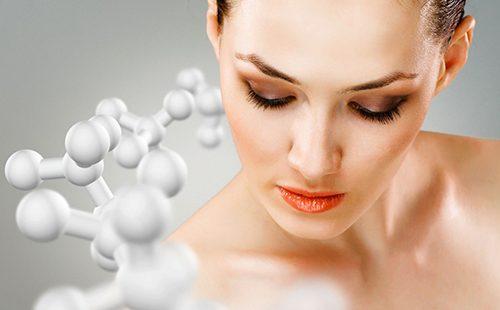
Ceramides
These are skin components, the level of which gradually decreases with age. In youth, the volume of ceramides is maximum, but by thirty years its natural production covers only sixty-two percent of the needs of the body, and by forty years - no more than thirty-seven percent.
But ceramides are extremely important for our skin. They are lipid molecules that are actively involved in the formation of the horny, barrier layer of the epidermis. The decrease in ceramide volume is manifested by unpleasant consequences.
- Excessive moisture loss. It causes the appearance of dryness, irritation, the appearance of small wrinkles.
- Cell cycle disorder. Ceramides activate cell apoptosis - a natural process of cell death to form a stable stratum corneum. This process is important for two reasons. First, the more actively the cells die, the more actively the basal layer of the skin produces new ones, which ensures stable tissue regeneration and renewal. Secondly, stratum corneum insufficiency causes excessive moisture loss and related problems.
In cosmeceuticals, plant ceramides are used, which are no different from the natural cells of the human body. When applied to the epidermis, they dissolve in the lipids of the stratum corneum and eliminate defects in its intercellular structure.
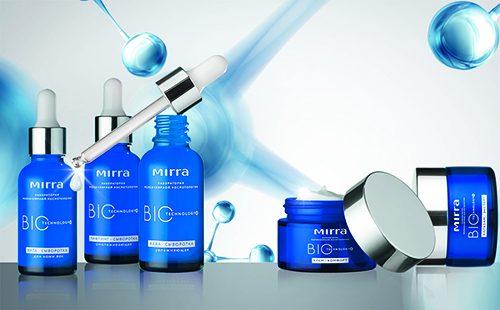
Peptides
The most interesting and extensive group of substances that revolutionized the world of cosmetology. Peptides are chains of amino acids. In composition, they are close to proteins, which also consist of amino acids, with the only difference being that the number of “chain” units in peptides is many times less than in proteins, ranging from two to three to several tens.
Peptides are natural compounds for every living organism. The human body produces them to regulate physiological processes. The number of peptides is huge. Depending on their structure and the sequence of amino acids in it, such chains give appropriate commands to start certain processes in the body.
Modern aesthetic medicine uses different types of peptides. The chains of amino acids of signaling and regulatory action are most in demand in cosmetology. They consist of only two to three amino acids, which is why the substances are called dipeptides and tripeptides.
The use of peptides is based on scientific research carried out by Soviet scientists in the mid-seventies of the last century. A group of employees of the laboratory of bioregulation of the Military Medical Academy. Kirov suggested that the aging of the body, manifested in a decrease in protein reproduction, can be stopped by the use of peptide bioregulators. The concept of peptide bioregulation that they proposed today has been developed in the scientific community of Russian aesthetic medicine.
In cosmetology, several types of peptides are used.
- Palmitoyl Tripeptide-5. Included in anti-aging care products. It effectively penetrates the epidermis, stimulates the production of collagen fibers in the skin, and increases its elasticity. Participates in the formation of connective tissue, increases the strength of the vascular wall. Strengthens the skin, helps to eliminate wrinkles of medium and large depth.
- Argilerine. The effect of this peptide is compared with the effect of Botox, but its effect on the body is much safer and more gentle. As an alternative to Botox injections, it reduces the activity of catecholamine, which is involved in the formation of nerve impulses. Thanks to the elimination of nervous tension, facial muscles come into a state of relaxation, which smoothes facial wrinkles. But argylerin does not cause their complete paralysis, the effect of the “mask”, puffiness and puffiness of the face without facial expressions, which is typical for Botox injections and its analogues.
- Matrixil TM. A regulatory peptide that arouses skin regeneration activity. It gives a signal to fibroblasts, which in turn cause tissues to produce collagen, fibronectin, and elastin. In laboratory tests and cosmetology practice, the high efficiency of matrix-based products that restore the regenerative function of the skin has been confirmed. Within two months of using the product, a decrease in the severity of wrinkles by 30-40 percent, a significant improvement in the condition of the skin, their appearance.
- Palmitoyl tetrapeptide-3. A complex with a pronounced protective, anti-inflammatory effect. Increases skin tone, promotes its hydration, strengthens capillaries, stimulates tissue repair, therefore it is included in the composition of sensitive skin prone to rosacea.
- Rigin. Peptide with anti-inflammatory effect. Included in anti-aging care products. Its need is due to an increase in the body's production in adulthood of a cytokine, a substance that stimulates inflammatory reactions. At the same time has a rejuvenating effect.
- Acetyl Octapeptide-3. A chain of eight amino acids, similar in action to argilerine. But it surpasses the latter in effectiveness, providing a more pronounced relaxing effect.
Manufacturers offer products with one or more active peptides that can solve multiple skin problems. In particular, to promote its rejuvenation, fight rosacea, lighten age spots.
The scientific achievements of Russian scientists confirm that there is an alternative to beauty injections. These are drugs based on cellular technologies that revive their own tissue regeneration processes without the use of artificial substances. Cellular cosmeceuticals with peptides, ceramides, fermented oils can be effectively used in home care without the risk of side effects and pain of invasive techniques.
